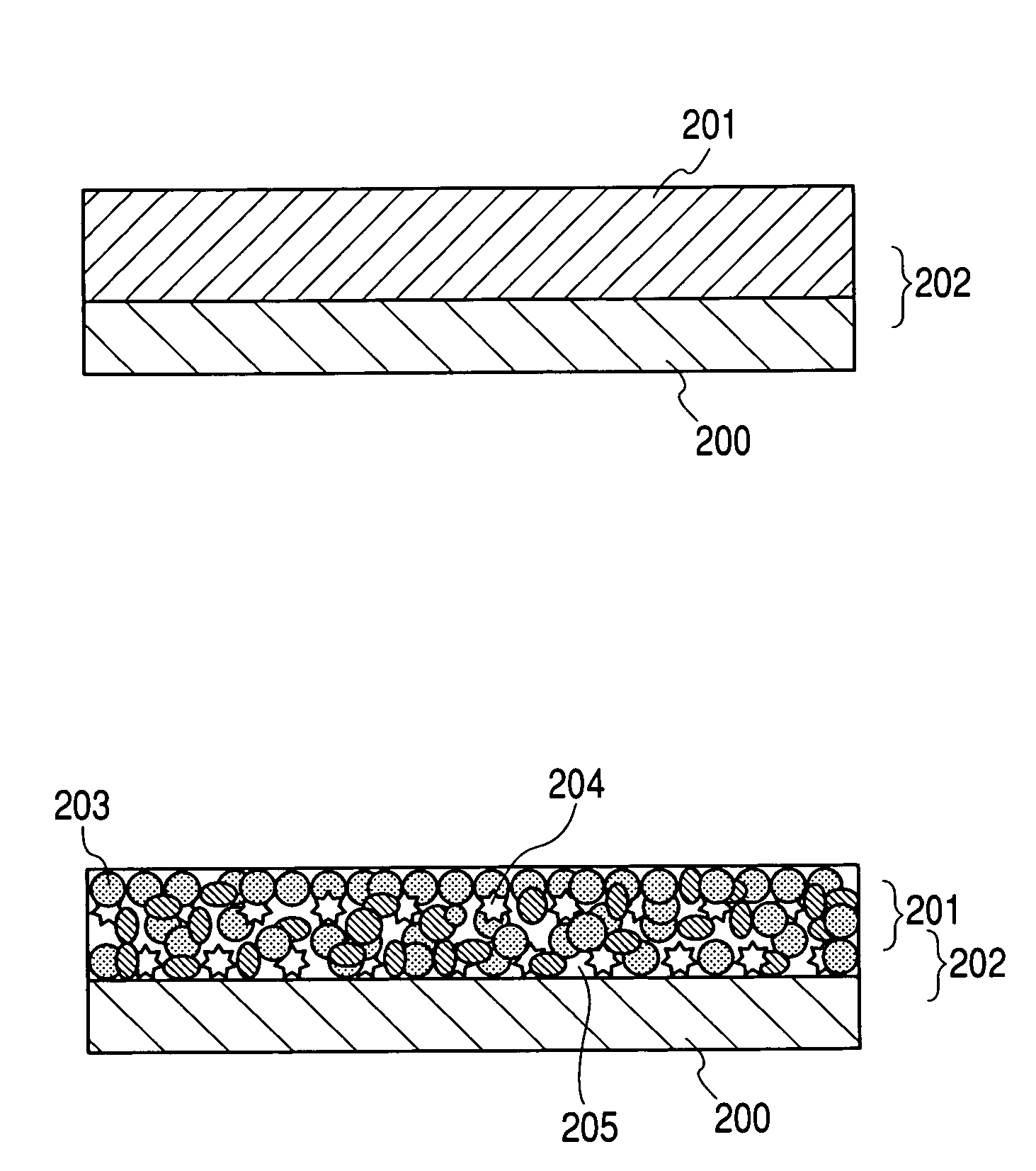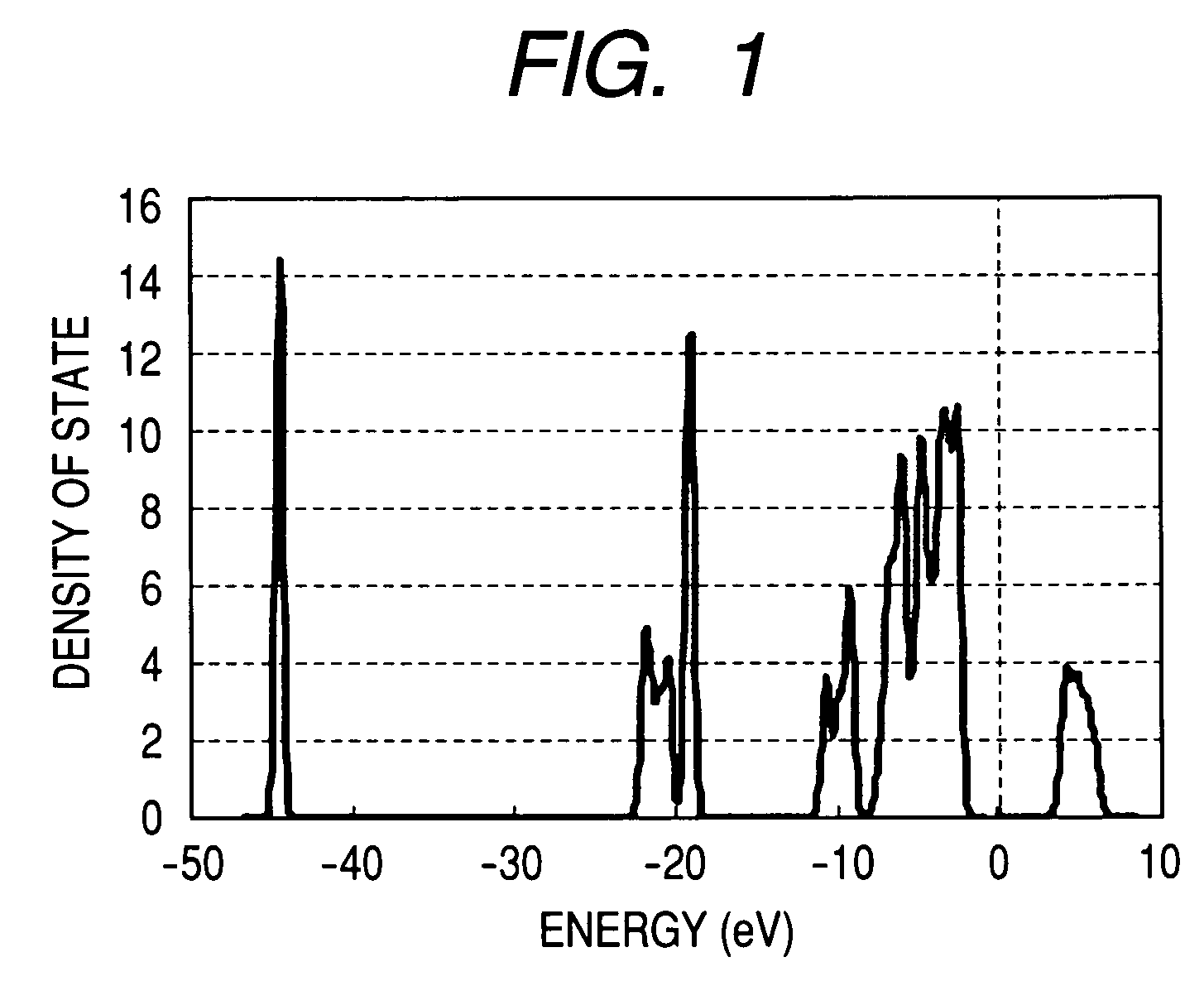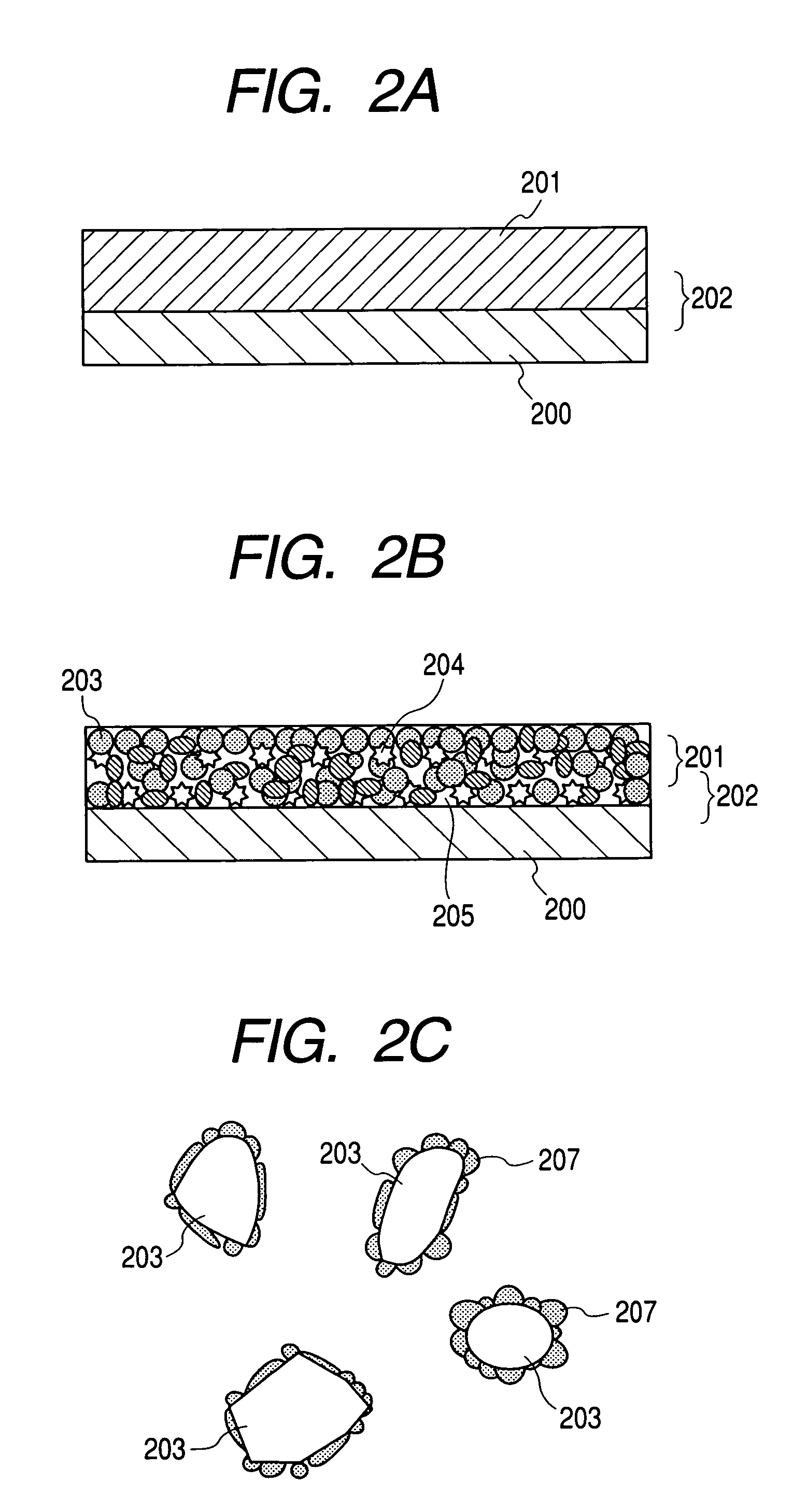Electrode material for lithium secondary battery, electrode structure employing electrode material, and lithium secondary battery having electrode structure
a lithium secondary battery and electrode material technology, applied in the direction of borates, cell components, electrochemical generators, etc., can solve the problems of large cosub>2, difficult construction of additional thermal power plants, and usable capacity of 200 mah/g or less, and achieve high theoretical capacity, high energy density, and high capacity
- Summary
- Abstract
- Description
- Claims
- Application Information
AI Technical Summary
Benefits of technology
Problems solved by technology
Method used
Image
Examples
example 1
[0087]First, an LixB0.75Mn0.25O2 model having a monoclinic LiBO2 structure was formulated by selecting a manganese element as an element having a varying valence.
Calculation of Voltage and Capacity:
[0088]The voltage and capacity of LixB0.75Mn0.25O2 were calculated using first principle density functional theory. LixB0.75Mn0.25O2 had an average voltage of 3.6 V (vs. Li / Li+) between x=0.0 and x=1.0, a theoretical capacity of 450 mAh / g at this time, and an energy density of 1.6 Wh / g.
Density of State:
[0089]Density of state (FIG. 6) at x=1.0 was investigated from the results of the first principle density functional theory. FIG. 6 shows no band gap in the vicinity of Fermi energy, thereby implying that LixB0.75Mn0.25O2 is a material having high electric conductivity. Here, an origin (0 eV) of energy in FIG. 6 was defined as Fermi energy.
Formation Energy:
[0090]A formation energy was −1.91 eV at x=1.0 and −0.83 eV at x=0.0, thereby implying that the model may exist in actuality.
example 2
[0091]First, an LixB0.75Co0.25O2 model having a monoclinic LiBO2 structure was formulated by selecting a cobalt element as an element having a varying valence.
Calculation of Voltage and Capacity:
[0092]The voltage and capacity of LixB0.75Co0.25O2 were calculated using the first principle density functional theory. LixB0.75Co0.25O2 had an average voltage of 4.3 V (vs. Li / Li+) between x=0.0 and x=1.0, a theoretical capacity of 430 mAh / g at this time, and an energy density of 1.8 Wh / g.
Density of State:
[0093]The density of state (FIG. 7) at x=1.0 was investigated from the results of the first principle density functional theory. FIG. 7 shows no band gap in the vicinity of Fermi energy, thereby implying that LixB0.75Co0.25O2 is a material having high electric conductivity. Here, an origin (0 eV) of energy in FIG. 7 was defined as Fermi energy.
Formation Energy:
[0094]The formation energy was −15.3 eV at x=1.0 and −14.2 eV at x=0.0, thereby implying that the model may exist in actuality.
example 3
1. Synthesis of LiB0.75Mn0.25O2
[0095]Lithium citrate, boric acid, and manganese nitrate were weighed so that Li / (B+Mn)=1.0 (atomic ratio) and B / Mn=75 / 25 (atomic ratio). The weighed chemicals were dissolved in an aqueous solution of citric acid at concentration of 20 wt %. The mixture was spray dried using a spray drier, to thereby synthesize a precursor. The precursor was calcined in an oxygen atmosphere (3 l / min) at 750° C. for 12 hours, to thereby synthesize LiB0.75Mn0.25O2, the positive electrode active material.
2. Analysis of the Synthesized Positive Electrode Active Material
XRD Analysis:
[0096]Peaks of an X-ray diffraction pattern of the positive electrode active material powder synthesized in the above 1 confirmed that LiB0.75Mn0.25O2 has a single crystal structure of a monoclinic LiBO2 structure.
XMA Analysis:
[0097]Elements of Li, B, Mn, and O were identified through X-ray microanalyzer analysis. ICP:
[0098]Atomic absorption plasma emission spectrometry confirmed that LiB0.75Mn...
PUM
| Property | Measurement | Unit |
|---|---|---|
| voltage | aaaaa | aaaaa |
| temperature | aaaaa | aaaaa |
| weight ratio | aaaaa | aaaaa |
Abstract
Description
Claims
Application Information
 Login to View More
Login to View More - R&D
- Intellectual Property
- Life Sciences
- Materials
- Tech Scout
- Unparalleled Data Quality
- Higher Quality Content
- 60% Fewer Hallucinations
Browse by: Latest US Patents, China's latest patents, Technical Efficacy Thesaurus, Application Domain, Technology Topic, Popular Technical Reports.
© 2025 PatSnap. All rights reserved.Legal|Privacy policy|Modern Slavery Act Transparency Statement|Sitemap|About US| Contact US: help@patsnap.com



